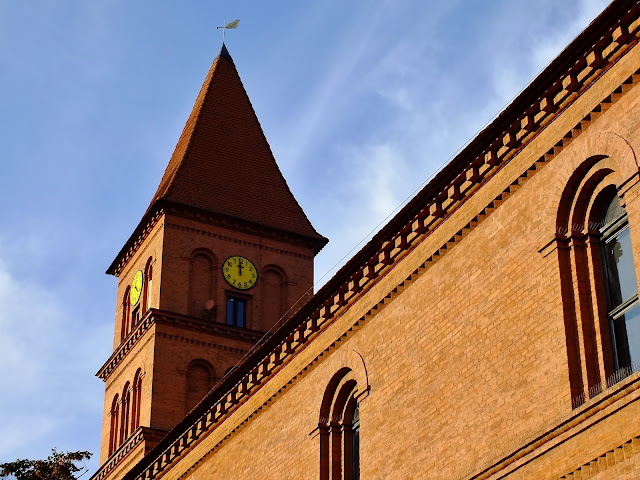 |
Nicolaus Copernicus was Polish renaissance astronomer and the first person to formulate a comprehensive heliocentric cosmology which displaced the Earth from the center of the universe. His epochal book, De revolutionibus orbium coelestium published in 1543, is often regarded as the starting point of modern astronomy and the defining epiphany that began the scientific revolution.
|
 |
| The Gingerbread Store. Traditional Polish gingerbread has been produced since the Middle Ages in the city of Thorn. Part of the national cuisine of Poland. They have been praised in literature, poetry etc. They were also traditionally given as a gift. |
 |
| Listed on the UNESCO list of World Heritage Sites Thorn has many monuments of architecture beginning from the Middle Ages. The city is famous for having preserved almost intact its medieval spatial layout and many gothic buildings, all built from brick, including monumental churches, the Town Hall and many burgher houses. |
 |
| Brick granary near Leaning Tower in baroque style (ul. Piekary 2). |
 |
| Nicolaus Copernicus house in his city of Thorn (see 7. photo). |
 |
| See the tower? It is the Church of the Holy Spirit. The idea to build it is the result of the consequences of religious riots between Catholics and Protestants, which erupted in the city in July 1724 (The Tumult of Thorn). The main city temple of protestants was taken as a punishment. After that they had to pray in cramped rooms of Artus Court (in the gallery). So they started to build the new one which is also taken by catholics and completed in neo-baroque style designed by Hugon Hartung and Carl Schäfer. Despite of the fact that the Church is old, the main tower is quiet new, from 1897-1899 (see 12. photo). |
 |
| Nicolaus Copernicus house facade (see 5. photo). |
 |
| City Townhall clocktower. |
 |
| The brick tenements near old town market. |
 |
| The part of the City Townhall and neo-baroque Church of the Holy Spirit. |
 |
| One of the charming gothic streets in the old town. |
 |
| The charming tenements of medieval Thorn. |
 |
| The knight figure on the facade of tenement. |
 |
| The memorial plaque made of wood (beside the Teutonic Castle). |
 |
| The shore of the Vistula, the Queen of the Polish Rivers viewed from the Old Town. |
 |
| Another tenements located next to the Teutonic Castle. |
 |
| Charming townhouses with windows in the city wall (guess the old places for archers). |
 |
| The Baj Pomorski Theater is a well-known Thorn puppet theater. |
 |
| Another ruins of Teutonic Castle (See 16. photo) |
 |
| Forest mushroom dumplings and potato pancakes. |
 |
| Mural on the city wall. |
 |
| One of the many Gothic churches in the city. |










































